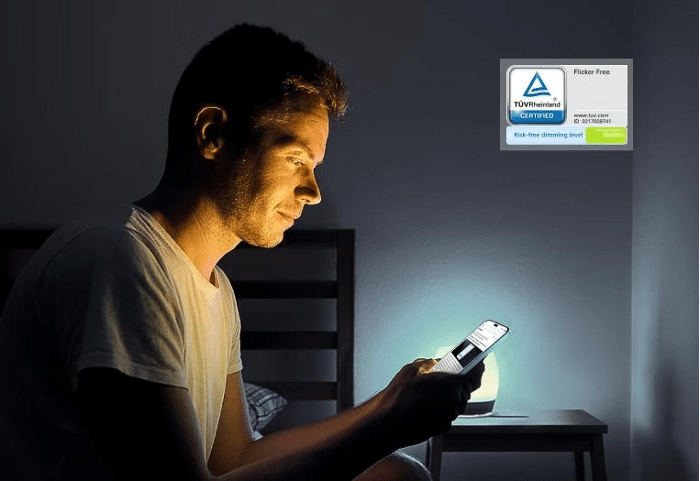Smartphones have become integral to daily life, offering convenience and connectivity. However, prolonged exposure to smartphone screens raises concerns about potential harm to your eyes. The increasing time spent on screens may lead to discomfort and vision issues, collectively known as digital eye strain. This blog aims to explore how smartphone screens can affect your eye health and provide actionable solutions to alleviate strain. By understanding these effects and implementing protective measures, you can enjoy your digital devices without compromising your vision. Devices like the HONOR 400 Lite are designed with features aimed at minimizing visual strain, making them a solid choice for users who prioritize eye comfort.
Understanding Digital Eye Strain
Digital eye strain, also known as computer vision syndrome, is a condition resulting from prolonged screen exposure. Common symptoms include dry eyes, blurred vision, headaches, and neck or shoulder pain. These discomforts arise because screens force your eyes to focus and refocus constantly, creating visual fatigue. Research shows that both adults and children are susceptible to the effects of digital eye strain, especially as screen time increases. Frequent screen interactions reduce your blink rate, leading to dry, irritated eyes. Understanding these dynamics is crucial for identifying how screens might be impacting your eye health and fostering strategies to mitigate these effects effectively.
Assessing Your Smartphone’s Impact
Understanding the specific aspects of smartphone use that could affect your eyes is the first step in mitigating digital eye strain. Let’s examine some critical elements.
Screen Brightness and Contrast
High screen brightness can strain your eyes, as they are constantly adjusting to the light. Bright screens in low-light environments are particularly taxing, leading to visual discomfort. On the other hand, screens that are too dim can also cause strain as they force your eyes to work harder to see clearly. Contrast plays a crucial role here, too; insufficient contrast between text and background can make reading challenging, prompting your eyes to overwork. Adjusting screen settings to maintain comfortable brightness and enhancing contrast can help reduce digital eye strain.
Screen Flicker and Refresh Rates
Flickering is a rapid change in brightness levels that can be invisible to the naked eye but still impact visual comfort. It is more prevalent in older screens or devices with lower refresh rates. A low refresh rate can make motion appear choppy and cause your eyes to work harder, resulting in fatigue and discomfort. Upgrading to screens with higher refresh rates can reduce flickering issues significantly. When selecting a device, prioritize screens offering more stable visuals to minimize strain caused by flicker or low refresh rates.

Viewing Distance and Posture
Holding your phone too close can strain your eyes, forcing them to converge and focus, which is uncomfortable over time. Maintaining a proper distance, generally about an arm’s length away, can ease this strain. Additionally, posture is crucial; slouching affects not just your spine but also your visual focus, as your eyes have to adjust to different angles. Ensure that your neck and shoulders are relaxed to support better eye health. Regularly reassessing your viewing distance and posture can contribute significantly to reducing digital eye strain associated with smartphone use.
Strategies to Protect Your Eyes
Protecting your eyes while using smartphones is not just about reducing screen time but also about making smart adjustments to your habits and settings.
Implementing the 20-20-20 Rule
A simple yet effective method to reduce eye strain is the 20-20-20 rule. Every 20 minutes, take a 20-second break and look at something 20 feet away. This practice allows your eyes to relax and reset their focus. Setting a timer can help you remember to stick to this routine. The shift in focus helps prevent fatigue and dryness by updating your blink rate back to normal. Consistently applying the 20-20-20 rule can substantially improve your comfort and minimize symptoms associated with digital eye strain.
Adjusting Device Settings
Customizing your device settings can play a significant role in minimizing digital strain. Start by optimizing brightness levels to match your environment. Most smartphones come with automatic brightness adaptation; use it to maintain comfortable lighting. Adjust text size and contrast settings to ensure readability. Dark mode or reading mode options can reduce glare and ease eye fatigue. These adjustments, while seemingly minor, collectively contribute to a more comfortable and eye-friendly smartphone experience.
Using Blue Light Filters and Screen Protectors
Excessive blue light exposure from screens can disrupt sleep patterns and contribute to strain. Most smartphones offer blue light filters that reduce this emission, making your screen easier on the eyes, especially at night. Consider using screen protectors with built-in blue light filtering technologies readily available in the market. By reducing blue light exposure, you can alleviate discomfort and promote better sleep routines, contributing to overall eye health.
Lifestyle Habits for Eye Health
Maintaining eye health goes beyond screen time. Incorporating healthy habits can support your vision significantly.
Regular Eye Exercises
Regular eye exercises can help strengthen your eye muscles and improve focus. Simple exercises include blinking deliberately to keep eyes moist, rolling your eyes to relieve tension, and focusing exercises where you switch between looking at nearby and distant objects. These can be done throughout your work or leisure time. Making a habit of these exercises can prevent strain and enhance your visual comfort over time.
Maintaining Proper Posture
Good posture is vital not only for spinal health but also for reducing eye fatigue. Standing or sitting with your shoulders back and neck straight ensures that your eye gaze is aligned properly, reducing the need for unnecessary eye positioning. Adjust your workspace and seating to support healthy postures. Regular breaks to correct and relax your posture can alleviate symptoms related to extended screen time, aiding in better eye health maintenance.
Conclusion
Smartphone screens are a constant presence in modern life, but by understanding their potential impact and adopting protective strategies, you can safeguard your eye health. Simple practices like adjusting settings, implementing the 20-20-20 rule, and prioritizing posture make a substantial difference. Combining these strategies with lifestyle habits, like regular eye exercises, offers a holistic approach to minimizing eye strain. By being proactive, you can enjoy your digital devices while preserving your vision for years to come.
